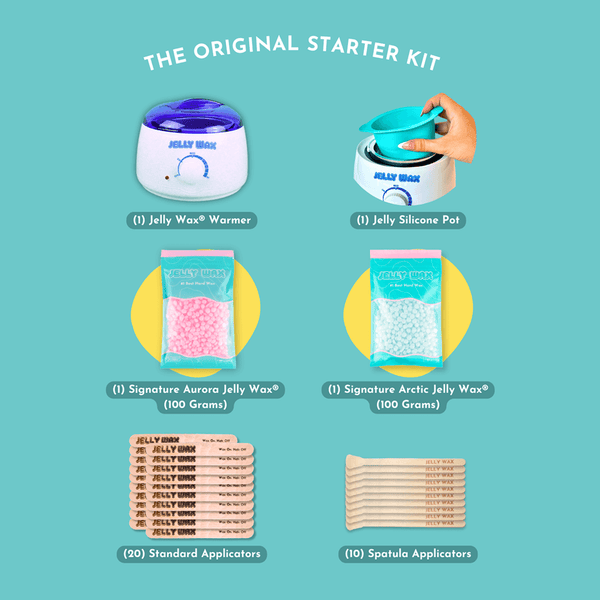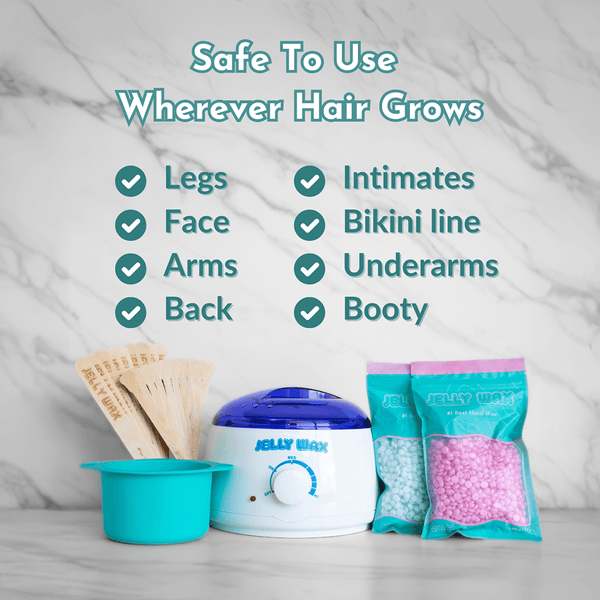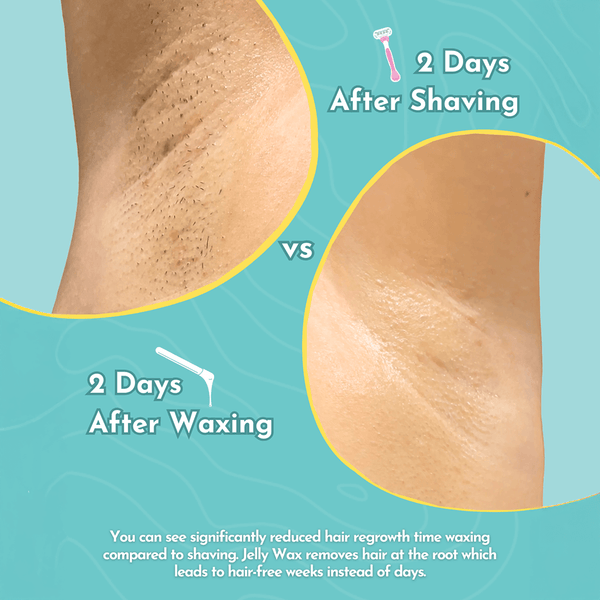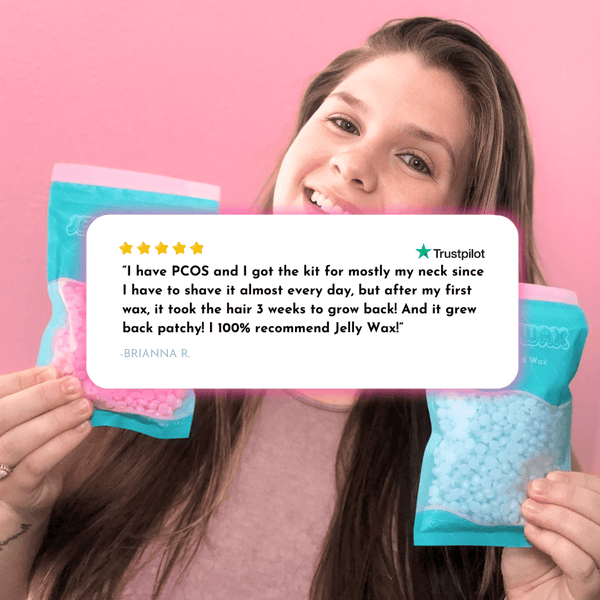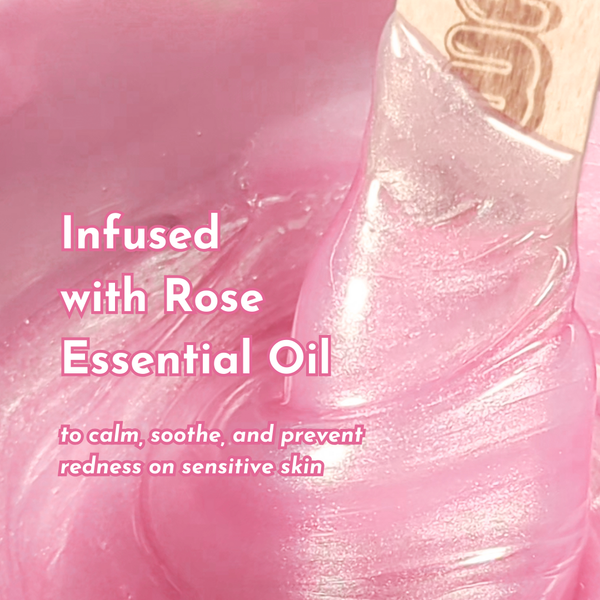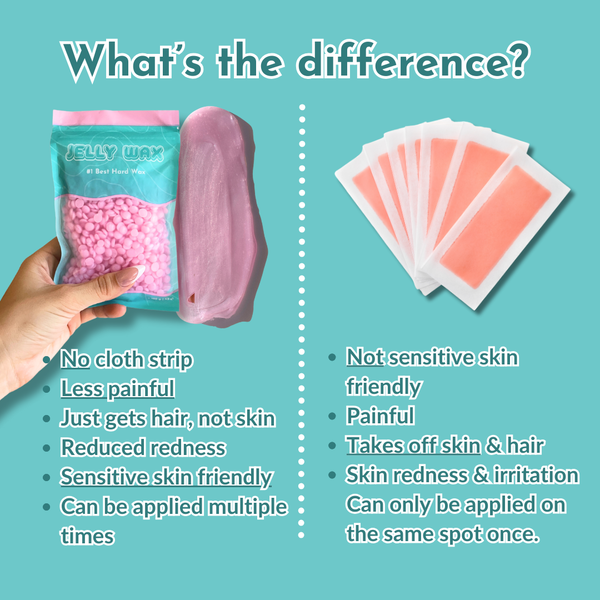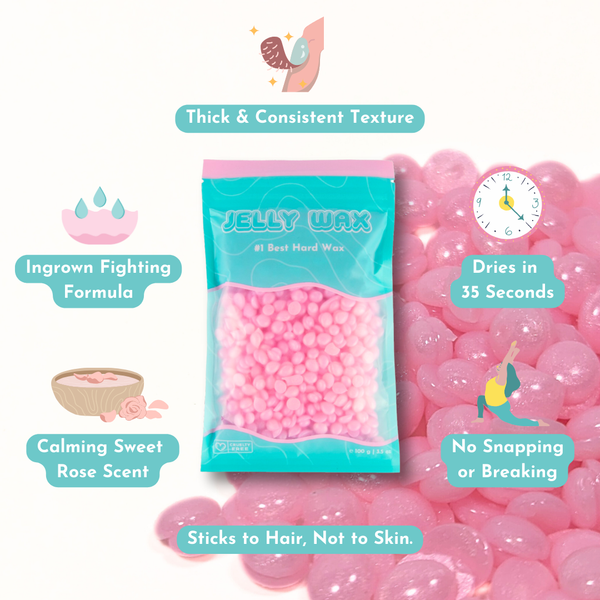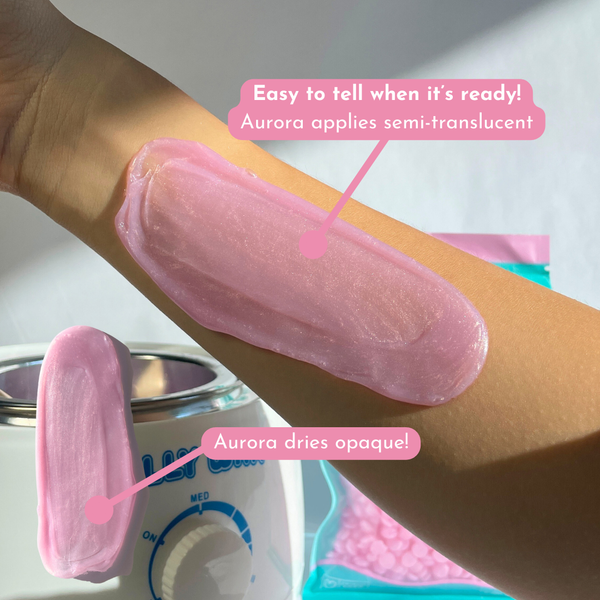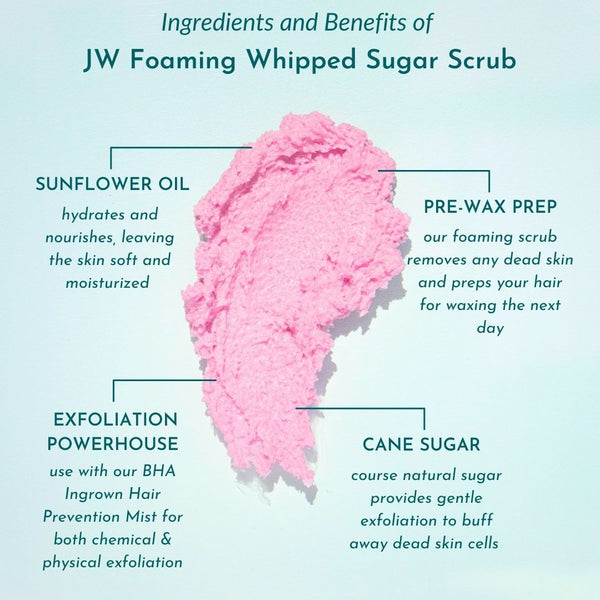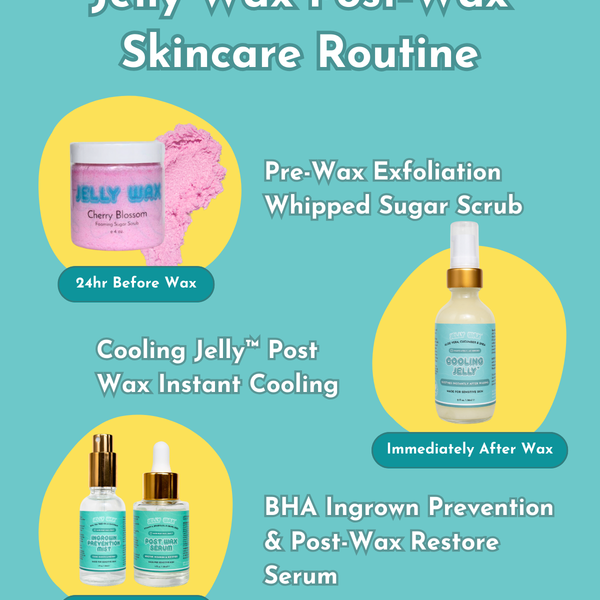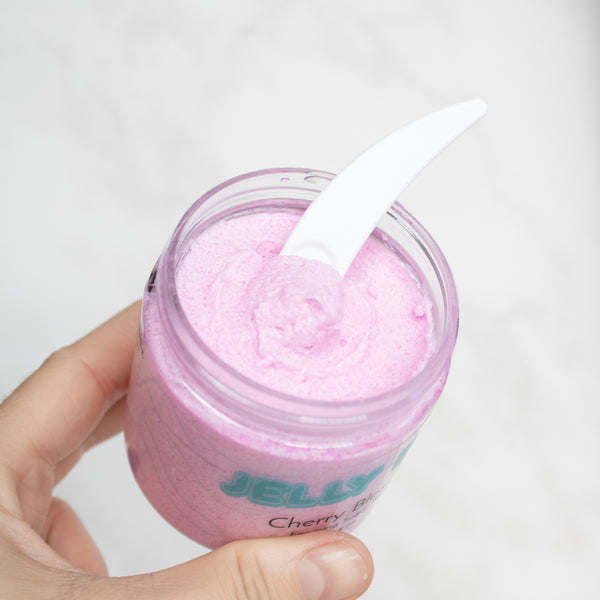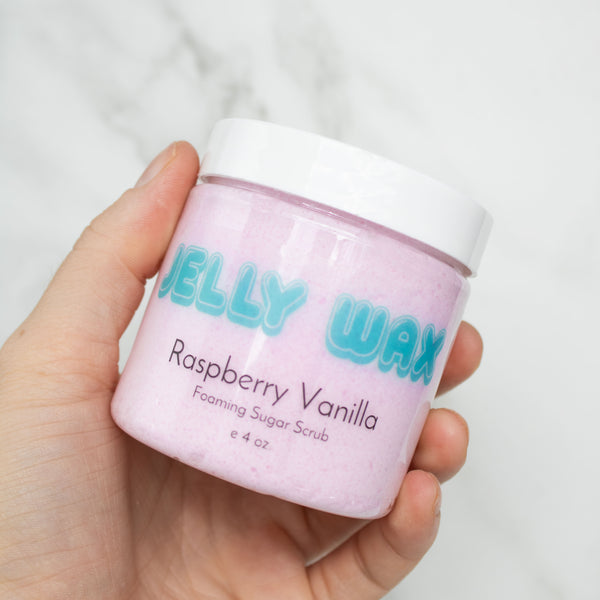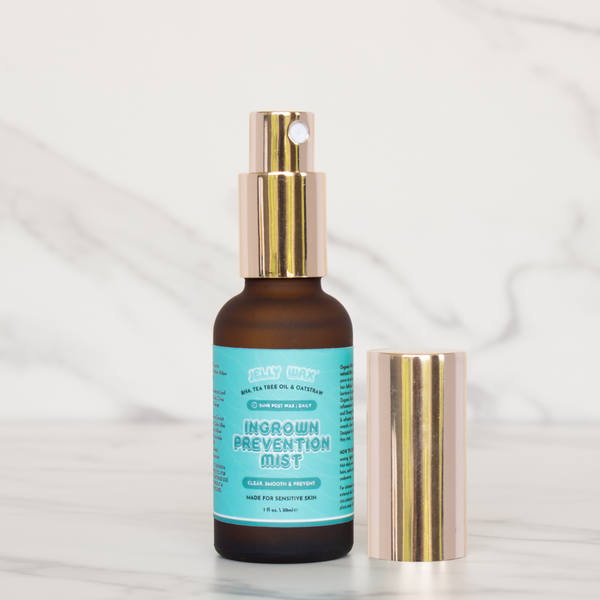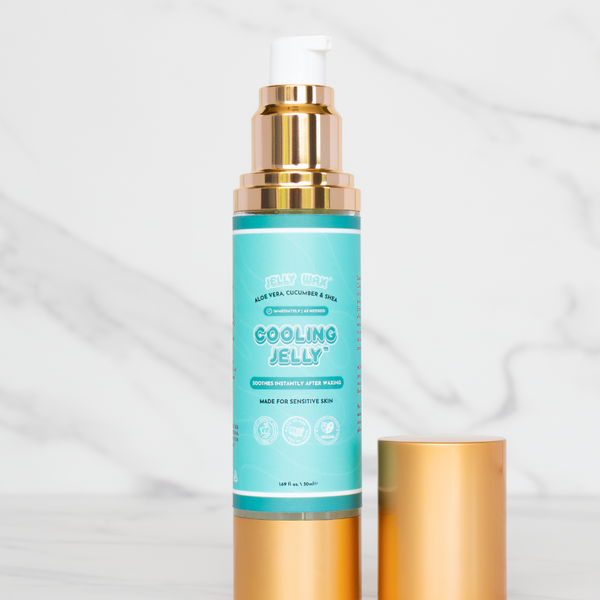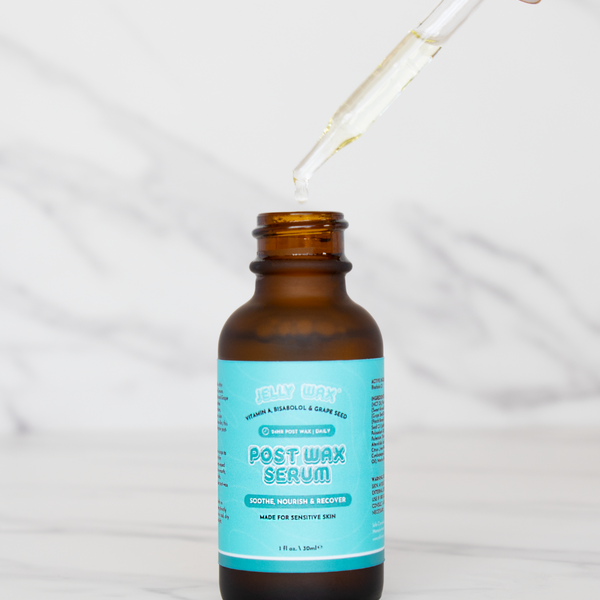How Hair Growth Cycles Affect Your Waxing Results
Everything You Need to Know for Smooth, Long-Lasting Results
When it comes to waxing, timing is everything. Whether you’re using an at-home waxing kit for the first time or you’ve been a regular with Jelly Wax for months, understanding your hair growth cycle can significantly improve your results.
In this article, we’ll break down the three phases of hair growth, explain why your first waxing session might not yield the smooth results you expect, and guide you on planning your waxing routine for silky skin that lasts.
Why Do Hair Growth Cycles Matter for Waxing?
You may have noticed that your skin feels smoother after the second or third waxing session compared to the first. This is because not all hair grows at the same rate; they follow a natural cycle.
There are three phases of hair growth:
1. Anagen Phase (Active Growth)
This is the ideal stage for waxing. The hair is still connected to the follicle, which means when you wax it, you remove it from the root. This results in longer-lasting effects and weaker regrowth over time.
2. Catagen Phase (Transition)
In this phase, hair has stopped growing but hasn’t yet fallen out. It's harder to remove hair at this stage, and waxing might leave some behind. This is a common reason why your first wax may not catch every single hair.
3. Telogen Phase (Resting/Falling Out)
The hair is preparing to shed naturally. Waxing during this stage won’t effectively pull the hair from the root since it’s no longer attached. These are the hairs that might regrow a few days after waxing (yes, even if you followed all the steps correctly.)
What This Means for You
If you've ever wondered, "Why is my hair growing back after just a few days?" your hair growth cycles may be why.
That’s why we recommend sticking to a waxing routine for at least 2–3 sessions. After a few waxes, your hairs will begin to sync up, and you’ll start to notice smoother skin for a longer period.
How Often Should You Wax?
Everyone's body is different, but here’s a general guide:
| Area | Waxing Frequency |
| Face (Brows, Lip, Chin) | Every 2-3 Weeks |
| Underarms | Every 3-4 Weeks |
| Bikini Area | Every 3-5 Weeks |
| Legs & Arms | Every 4-6 Weeks |
Tips to Maximize Your Results
✅ Wait for the Right Length. Hair should be about the length of a grain of rice (¼ inch). If it's too short, the wax won't grip; if it's too long, trim it.
✅ Don't Shave Between Sessions. Shaving disrupts the hair growth cycle. Stick with waxing for longer-lasting results.
✅ Exfoliate Regularly! Gently exfoliate 2–3 times a week with our Foaming Sugar Scrub to prevent ingrown hairs and to clear away dead skin for better wax adhesion.
✅ Stay Consistent! The more you wax, the better your results will be. Over time, hair will grow back finer, softer, and sparser.
Final Thoughts
Understanding how the hair growth cycle works is essential to maximizing your at-home waxing routine.
So, if your first waxing session didn’t catch everything, don’t give up! With each session, your hair becomes more cooperative, and your skin gets smoother. Stick with it, and you'll love the results!
Ready to Start?
Shop our Beginner Jelly Wax Waxing Kit and experience the difference for yourself! 💛



